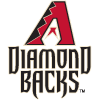This article is part of our Pitching 3D series.
(ages listed are as of October 1, 2016)
Vincent Velasquez, RHP, Age 24
| IP | ERA | WHIP | K | W |
| 119.0 | 4.31 | 1.37 | 137 | 8 |
Choosing Velasquez as
(ages listed are as of October 1, 2016)
Vincent Velasquez, RHP, Age 24
| IP | ERA | WHIP | K | W |
| 119.0 | 4.31 | 1.37 | 137 | 8 |
Choosing Velasquez as a keeper in an NL-only league would have been a no-brainer a month or so ago, but his recent performance has blown up the ratios, tacking 0.98 runs to his ERA over the past three starts. On an individual-game basis, Velasquez has only struck out more than seven batters in two of the 20 starts that he has had since the April demolition of the Padres, though both of those games involved double-digit Ks, and he has only pitched more than 6.0 innings one other time this season outside of the San Diego start. It's not that he's been inefficient so much as the team being careful with his workload.
Velasquez had been excellent at keeping the ball in the yard for most of the year, allowing just 11 homers through his first 19 starts, but the last three games have involved a disaster of homers, with multiple bombs in each game for a total of eight homers allowed across the trio of turns. Take out the epic start against the Padres and he's still above a K-per-inning for the year, and though his final fantasy tallies of 2016 will be disappointing in three out of four categories, Velasquez has considerable upside and could be a three-category contributor with more stamina.
The right-hander hasn't pitched this many pro innings in a season since 2013, and he threw just 88.2 between the Texas League and the Astros last season, giving rise to the possibility that he has hit a physical wall as we near the final month of a long season. He will likely be shut down soon, and the keeper conundrum will be further stirred by the expectation that he'll likely be limited to 150 innings or fewer next season.
Robbie Ray, LHP, Age 25
| IP | ERA | WHIP | K | W |
| 145.0 | 4.28 | 1.43 | 181 | 7 |
Then he started going nuts. In eight starts after the break, Ray has pitched to a 3.21 ERA with an incredible 66:14 K:BB in 47.2 innings. He has posted three games of double-digit Ks in that stretch - something that he didn't accomplish in any first-half starts - peaking with 13 strikeouts while giving up just one hit (a solo homer) in 7.0 innings against the Padres. That's not to say that he's been without some bumps and bruises, as he endured a three-start run of allowing at least five runs, but his fantasy value was spared somewhat by the 30 Ks that he piled up in 16.2 innings of those high-run outings.
The issue is pitch-count efficiency. Ray's 4.09 pitches per plate appearance is the seventh-highest rate in the majors among qualified pitchers (n = 129), and he faces an above average number of batters per frame (4.41 batters/inning; league average is 4.26). The Diamondbacks have been consistent with Ray's pitch counts on a per-game basis, giving him the leash to crack 100 throws in 16 of his last 21 starts yet only crossing the 110-pitch barrier on three occasions, maxing out at 116. The long at-bats and copious batters conspire to limit Ray's innings, an area of potential improvement that could be masked by a K/9 rate that goes down even if his K percentage holds firm.
Ray pitched 169.1 innings last season between the majors and minors, so he will likely be afforded the opportunity to stay in the rotation for the rest of the season; if the remaining turns continue on the trajectory of performance, then Ray could see his perceived value vault over the offseason as his numbers are stacked against those of his contemporaries.
Jon Gray, RHP, Age 24
| IP | ERA | WHIP | K | W |
| 132.2 | 4.61 | 1.24 | 142 | 8 |
The issue is that Gray has been nearly as susceptible to the blowup start when pitching on the road. Just three starts ago, he gave up seven runs (six earned) on the road against the weak offense of the Phillies, and earlier this season he was beat up for nine runs against the Cardinals in St. Louis before he could escape the fourth inning. Much of Gray's damage has been against the worst teams in the league, as his last three games of double-digit strikeouts have come against the Brewers and Padres (twice) - he struck out 10 batters one other time, that being his first start of the year versus the Dodgers.
The games which fall on the extreme ends of the performance spectrum get all of the attention, and for good cause, as a game of that magnitude can cause a serious dent in a fantasy team's bottom line. He hasn't really had an in-between gear for the past two months, as each game has either been a disaster (including three of his last four games) or dominant, with two or fewer runs allowed, including the five starts prior to his most recent string of blowups. The fact that he has flashed dominance at home as well as on the road teases the possibility that Gray will be the rare Rockies pitcher who is rosterable at home, rather than a half-pitcher who is only worth streaming when the Rox are playing at sea level. In fact, his K/BB is much better at home (4.8) than it is on the road (2.3), but the extreme nature of his blowups - as well as the unpredictability of them - raises the caution flag. Were he playing for any other team, I expect that keeping Gray would be a no-brainer decision, but high-altitude games will be part of his reality as long as he dons a Rockies uniform.
The Rest of Phillies
Aaron Nola
Jeremy Hellickson
Jerad Eickhoff
The Philly rotation is absolutely loaded with intrigue. Let's break them down individually:
Nola: Currently on the DL with a diagnosed UCL sprain and flexor sprain, the Phillies are saying all the right things about the right-hander being ready for the start of 2017 spring training, but caveats abound when a young pitcher has an elbow injury, let alone a pair of injuries that are known precursors to Tommy John surgery. For his part, Nola had an excellent 121:29 K:BB in 111.0 innings this season, the finest such ratios on the staff, though it's at least curious that he had such a modest K rate in the minors (7.5 K/9) as well as last season in the majors (7.9 K/9).
Hellickson: At 51.8 percent*, his changeup has induced the second-highest whiff rate of any pitch in the majors (Jon Lester's curve is tops at 52.5 percent*), though his K rate for the season is much more modest at 20.9 percent, with a 7.6 K/9 that essentially matches that of the past three seasons. He is walking fewer batters than ever before and is allowing a lower frequency of hits than he has in years, but whether he can sustain those marks is another question altogether. Helix has been with three different teams in three years and is a free agent after the season, so whether he is even in the NL for 2017 is still up in the air.
Eickhoff: The walk-avoidance is legit but so is the lack of strikeouts, and though the former helps to reduce the pain induced by his high frequency of homers allowed, the latter leaves him vulnerable to the variability of balls in play. He's likely to help in the WHIP category, but that might be the only one.
This trio is supported by a meek offense, so unless the Phillies add some significant sock to their lineup in the offseason, the win totals of these players will likely fall short of having a fantasy impact. These are also not high-strikeout hurlers, with the possible exception of Nola, putting the onus on their ratios to carry fantasy weight. All told, we might be looking at a trio of two-category pitchers (at most) when all is said and done, and those two categories are only partially under their own control. Keep with caution.
*sources: Baseball Prospectus and Brooks Baseball









